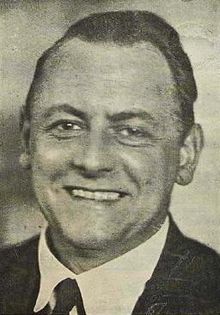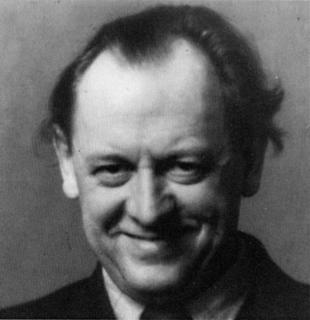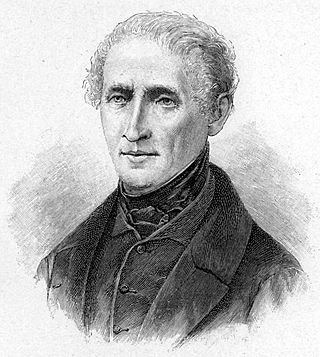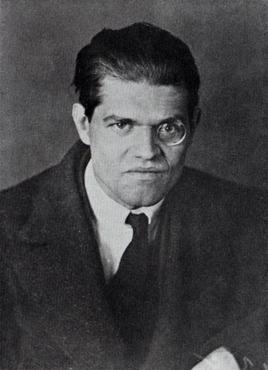
Merz (art style) is a synonym for the more common expression and term Dada, [1] and traces back to Kurt Schwitters. [2]

Merz (art style) is a synonym for the more common expression and term Dada, [1] and traces back to Kurt Schwitters. [2]
Merz was conceptualized by Kurt Schwitters, who planned a Dada section in Hanover. However, upon being denied an invitation to the First International Dada Fair in Berlin in 1920, Schwitters wished to establish a subsect of the Dada movement that was tailored to his own artistic philosophies and visions. In his own words, he wished to find a "totally unique hat fitting only a single head"— his own. [3] [4]
The name Merz was generated by chance through a collage that incorporated the German word Kommerz (commerce). The resulting word, which was nonsensical and spontaneously generated, was similar in origin and philosophy to the title of Dada. Merz became Schwitters's synonym for his own approach to Dada. [5]
Like Dada, Merz was characterized by spontaneity and frequently made use of found objects. One of the most significant Merz artifacts constructed by Schwitters is the Merzbau, a tower-sized sculpture assembled from refuse and ephemera that occupied the inside of his apartment and existed from 1927 to 1943, when it was destroyed by a British air raid during World War II. [6]
Kurt Schwitters, a pioneer in fusing collage and abstraction— influenced Robert Rauschenberg, Jasper Johns, the Fluxus movement and Joseph Beuys, too. [7]

Kurt Hermann Eduard Karl Julius Schwitters was a German artist. He was born in Hanover, Germany, but lived in exile from 1937.

A found object, or found art, is art created from undisguised, but often modified, items or products that are not normally considered materials from which art is made, often because they already have a non-art function. Pablo Picasso first publicly utilized the idea when he pasted a printed image of chair caning onto his painting titled Still Life with Chair Caning (1912). Marcel Duchamp is thought to have perfected the concept several years later when he made a series of readymades, consisting of completely unaltered everyday objects selected by Duchamp and designated as art. The most famous example is Fountain (1917), a standard urinal purchased from a hardware store and displayed on a pedestal, resting on its back. In its strictest sense the term "readymade" is applied exclusively to works produced by Marcel Duchamp, who borrowed the term from the clothing industry while living in New York, and especially to works dating from 1913 to 1921.

Postmodern art is a body of art movements that sought to contradict some aspects of modernism or some aspects that emerged or developed in its aftermath. In general, movements such as intermedia, installation art, conceptual art and multimedia, particularly involving video are described as postmodern.

Joseph Freiherr von Eichendorff was a German poet, novelist, playwright, literary critic, translator, and anthologist. Eichendorff was one of the major writers and critics of Romanticism. Ever since their publication and up to the present day, some of his works have been very popular in German-speaking Europe.
Neo-Dada was a movement with audio, visual and literary manifestations that had similarities in method or intent with earlier Dada artwork. It sought to close the gap between art and daily life, and was a combination of playfulness, iconoclasm, and appropriation. In the United States the term was popularized by Barbara Rose in the 1960s and refers primarily, although not exclusively, to work created in that and the preceding decade. There was also an international dimension to the movement, particularly in Japan and in Europe, serving as the foundation of Fluxus, Pop Art and Nouveau réalisme.

Raoul Hausmann was an Austrian artist and writer. One of the key figures in Berlin Dada, his experimental photographic collages, sound poetry, and institutional critiques would have a profound influence on the European Avant-Garde in the aftermath of World War I.

Assemblage is an artistic form or medium usually created on a defined substrate that consists of three-dimensional elements projecting out of or from the substrate. It is similar to collage, a two-dimensional medium. It is part of the visual arts and it typically uses found objects, but is not limited to these materials.

The Confusions of Young Törless, or Young Törless, is the literary debut of the Austrian philosophical novelist and essayist Robert Musil, first published in 1906.
Volker Helmut Manfred Zotz is an eminent Austrian philosopher, religious studies scholar, Buddhologist and a prolific author.
Tomas Schmit was an artist and author associated with the Fluxus movement of the early 1960s and created during the subsequent 40 years a multi-layered work that comprises drawings, editions, theoretical texts and artists books.
Man and Boy: Dada is a 2003 opera by Michael Nyman with a libretto by Michael Hastings. It tells the story of a friendship between aging dada artist Kurt Schwitters and a twelve-year-old boy. These two characters and the boy's mother make up the cast of the opera.
Leah Dickerman is the director of research programs at The Museum of Modern Art in New York City. She was formerly director of editorial & content strategy at MoMA. Serving previously as the museum’s first Marlene Hess Curator of Painting and Sculpture, a post endowed in 2015, Dickerman previously held the positions of curator of painting and sculpture at MoMA (2008–2015), acting head of the Department of Modern and Contemporary Art at the National Gallery of Art (NGA), Washington, D.C. (2007), and associate curator in modern and contemporary art at the NGA (2001–2007). Over the course of her career, Dickerman has organized or co-organized a series of exhibitions including One-Way Ticket: Jacob Lawrence's Migration Series and Other Works (2015), Inventing Abstraction, 1910-1925 (2012–2013), Diego Rivera: Murals for the Museum of Modern Art (2011–2012), Bauhaus: Workshops for Modernity (2009–2010), Dada (2005–2006), and Aleksandr Rodchenko (1998).

Gerhard Rühm is an Austrian author, composer and visual artist.

Fritz Joachim Raddatz was a German feuilletonist, essayist, biographer, journalist and romancier.
Jack Ox is an intermedia artist and an acknowledged pioneer of music visualization.
The art exhibition Bilderstreit – Widerspruch, Einheit und Fragment in der Kunst seit 1960 was a retrospective in the Rheinhallen in Cologne from 8 April 1989 to 28 June 1989 and was held by the Museum Ludwig shortly before the German reunification.
Liselotte von Reinken was a German historian, biographer of Wilhelm Groener and Paula Modersohn-Becker. She also worked at Radio Bremen for 19 years.
Kurt Honolka was a German musicologist, journalist, and music and theatre critic. He is known as a translator of the librettos of Czech operas into German, such as Smetana's Dalibor and Janáček's Osud.
Gabriele Fritsch-Vivié is a German theatre studies schlolar, playwright and journalist. A member of the working group "Women in Exile", she focuses on biographies of political repression in the first half of the 20th century.

Logik is one of the most recited poems of the German poet and painter Joachim Ringelnatz (1883–1934).